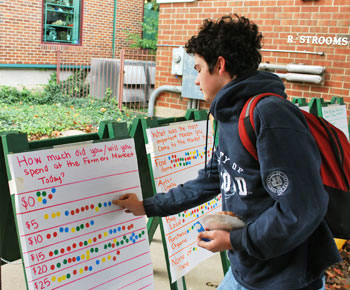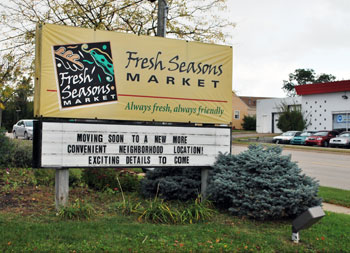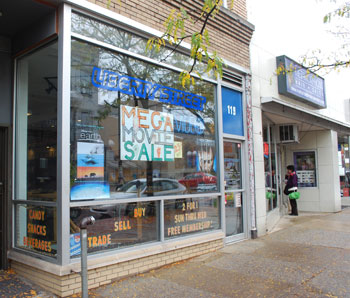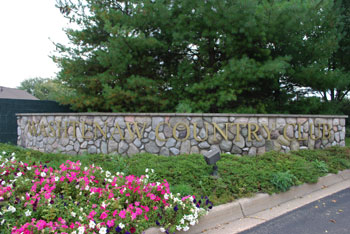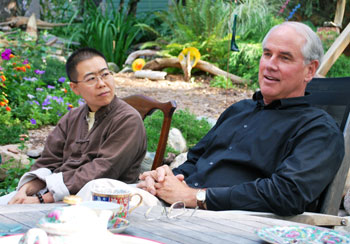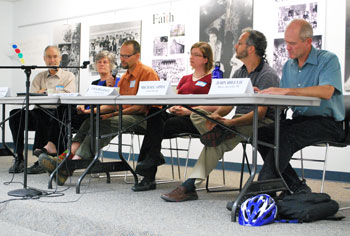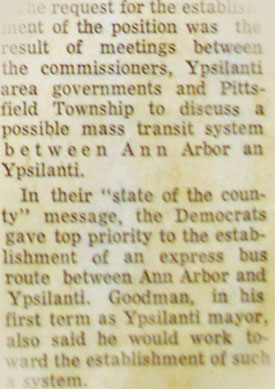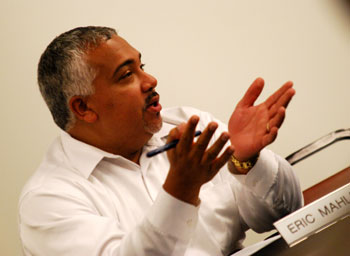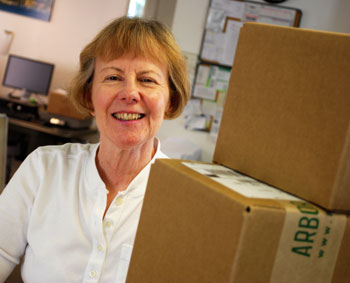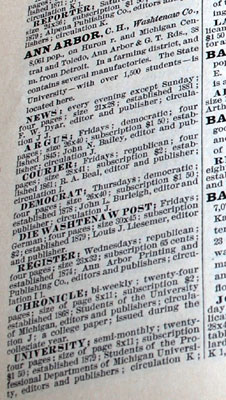Work Session: Trains, Trash and Taxes

The proposed business improvement zone would include Ann Arbor's Main Street from William Street in the south to Huron Street in the north.
Ann Arbor City Council work session (Oct. 12, 2009): It’s a world where you can throw your newspapers, glass bottles and plastic tubs into one single recyclables cart and set it out for morning collection.
It’s a world where you can then board a bus that drops you off at the train station for your morning commute to Detroit.
It’s a world where during the work day you watch a foot of snow fall, but on your return home to Ann Arbor, you see that the snow hasn’t just been plowed on Main Street – it’s been completely removed – along with those handbills you’d noticed plastered on the lightpost.
It’s a world where later at home, you roll your empty recycling cart back to its place. Then you log on to the internet and see you’ve earned $250 worth of points tallied by the weight of the recyclables that the truck has been recording and crediting for the last year.
At its Monday night work session, Ann Arbor’s city council heard presentations on all the discrete elements of that world, which Ann Arbor could start to resemble in a couple of years. [Full Story]





